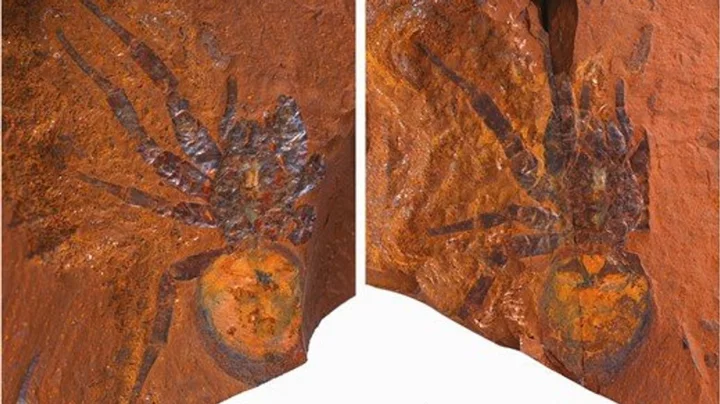
Scientists find 'giant' dinosaur spider fossil in Australia
If you thought Australia’s spiders were scary, wait until you see the prehistoric version. Scientists have found a fossilised giant trapdoor spider in New South Wales, only the fourth specimen of its kind to be found in Australia. The creature would have roamed and hunted in the surrounding areas which were once a lush rainforest, researchers said in a recently filed report. Last year, scientists unearthed fossils of the rainforest area from millions of years ago, teeming with specimens including plants, trapdoor spiders, giant cicadas and wasps. Now the area is a grassland region known as McGraths Flat. Researchers have named the spider fossil ‘Megamonodontium mccluskyi’. It would have lived in the Miocene period 11m to 16m years ago. “Only four spider fossils have ever been found throughout the whole continent, which has made it difficult for scientists to understand their evolutionary history,” said palaeontologist Matthew McCurry of the University of New South Wales and the Australian Museum. “That is why this discovery is so significant, it reveals new information about the extinction of spiders and fills a gap in our understanding of the past. “The closest living relative of this fossil now lives in wet forests in Singapore through to Papua New Guinea. “This suggests that the group once occupied similar environments in mainland Australia but have subsequently gone extinct as Australia became more arid.” The spider was found among many other Miocene fossils. In some of them, the fossils were so well preserved that subcellular structures could be made out. “Scanning electron microscopy allowed us to study minute details of the claws and setae on the spider's pedipalps, legs and the main body,” said virologist Michael Frese of the University of Canberra. The details meant scientists could confidently place it near the modern Monodontium, or trapdoor spider. However, it is five times larger than its modern day relatives. Megamonodontium mccluskyi's body is 23.31 millimetres long – that is just over an inch. The discovery of the species also tells us something of the past climate of Australia, the report added. The fact that it was found in a layer of rainforest sediment means the region was once much wetter than it is now. That could, in turn, help scientists understand how a warming climate has already altered the country’s life forms – and how it might change them again. "Not only is it the largest fossilized spider to be found in Australia but it is the first fossil of the family Barychelidae that has been found worldwide," said arachnologist Robert Raven of Queensland Museum. "There are around 300 species of brush-footed trapdoor spiders alive today, but they don't seem to become fossils very often. "This could be because they spend so much time inside burrows and so aren't in the right environment to be fossilized." The findings were published in the Zoological Journal of the Linnean Society. Sign up to our free Indy100 weekly newsletter Have your say in our news democracy. Click the upvote icon at the top of the page to help raise this article through the indy100 rankings.
2023-09-25 22:22

People don’t become adults till they’re in their 30s, research suggests
Ever felt a bit immature? Well, don't worry. People don't become fully "adult" until they're in their 30s, according to experts. While, in the UK, we legally become adults at 18, research suggests people in their late teens are still going through significant changes in the brain. Professor Peter Jones, from Cambridge University, told the BBC back in 2019: "What we're really saying is that to have a definition of when you move from childhood to adulthood looks increasingly absurd. "It's a much more nuanced transition that takes place over three decades." He added: "I guess systems like the education system, the health system and the legal system make it convenient for themselves by having definitions." When you reach 18, you can vote, buy alcohol, get a mortgage and are also treated as an adult if you get in trouble with the police. Despite this, Professor Jones says he believes experienced criminal judges recognise the difference between a 19-year-old defendant and a "hardened criminal" in their late 30s. "I think the system is adapting to what's hiding in plain sight, that people don't like (the idea of) a caterpillar turning into a butterfly," he said. "There isn't a childhood and then an adulthood. People are on a pathway, they're on a trajectory." Meanwhile, in an interview with PBS, Dr Jay Giedd, chair of child psychiatry at Rady Children’s Hospital-San Diego, said that the development of the prefrontal cortex, the part of the brain responsible for social interactions, regulating emotions, controlling impulsive behaviour, and assessing risk, doesn’t stop at age 18. Instead, he said it takes almost 25 years. So give yourself a break unless you are in your 30s. And if you are? Grow up. Sign up to our free Indy100 weekly newsletter Have your say in our news democracy. Click the upvote icon at the top of the page to help raise this article through the indy100 rankings.
2023-09-25 17:49
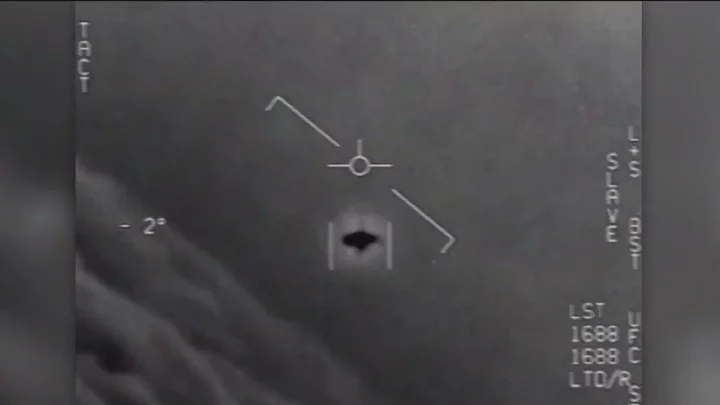
Local baffled by mysterious 'UFO' hovering in the sky
A mysterious spinning ‘UFO’ has been spotted in the night sky by a stunned local. The brightly illuminated object is seen spinning in the air, but it appears to hover above a mountain. The shocked onlooker zooms in on the mysterious aircraft while saying in wonder: “It’s moving.” The hovering UFO was filmed in the village of Honorato Vásquez, Ecuador, on Tuesday (9 Sept) evening. The local authorities have yet to respond to claims that the object was from outer space. One local said: “I believe it.” Manuel wrote: “Those crazy aliens.” Yet Eddy joked: “In that drone there, you wouldn’t even be able to fit two-quarters of a Martian!” It followed an alleged aerial battle between military personnel and several alien spaceships in Argentina this month. Scared locals claimed that the military base was attacked by four black triangular-shaped UFOs. Scores of residents gathered outside the Commander Espora Air Naval Base near Bahía Blanca, Buenos Aires, as thunderous noises sounded from within the perimeter walls. The Commission for the Study of UFO Phenomena of the Argentine Republic, an organisation dedicated to investigating alleged alien sightings, claimed to have information that there were four UFOs seen attacking the military base. The group said the alien spacecrafts were black and triangular in shape and that Argentine troops fired at them with anti-aircraft weapons. Group spokesperson Andrea Pérez Simondini said witnesses saw “four lights entering the territory from across the ocean before taking a strategic position over one of the buildings where ammunition is stored”. However, the military authorities have denied that the base was under attack and claimed that the videos were faked by unscrupulous locals. Navy spokesperson Captain Germán Luis Zarralanga said their Sikorsky SH-3 Sea King helicopter was taking part in a training exercise that night, but was not involved in any kind of altercation with other aircraft. When discussing the social media footage, the spokesperson said: “It’s an edit. I don’t know what their intentions were. “Airport security and airport workers did not report seeing anything, and everyone at the base was sleeping except for the person piloting the helicopter. There was no type of special activity, no tactical manoeuvres, just a normal helicopter training flight, nothing related to ammunition.” One local commented: “Incredible! How many UFOs? I can't believe it! Amazing. An interplanetary war has begun.” Another said: “Are you telling me that it was one of the first-ever confrontations between humans and UFOs and we shot them down?” Sign up for our free Indy100 weekly newsletter Have your say in our news democracy. Click the upvote icon at the top of the page to help raise this article through the indy100 rankings.
2023-09-24 18:55

How War and Aging Dams Left Libya Exposed to a Climate Superstorm
The mother of five knew something was wrong with the rain. The windows of her home in the
2023-09-24 17:21

Archaeologists are too scared to open up the tomb of China’s first emperor
Archaeologists are terrified to open the tomb of Qin Shi Huang, China's first emperor who has been buried for 2,200 years. The tomb of Qin Shu Huang, who ruled from 221 BC to 210 BC, is guarded by a terracotta army of soldiers and horses. The discovery was found by farmers back in 1974 in the Shaanxi province of China. While archaeologists explored the area, they have never opened the tomb itself – and within good reason. According to IFL Science, not only do archaeologists believe it will cause damage, but there are rumours of deathly booby traps that could kill curious intruders. Writings by Chinese historian Sima Qian 100 years after Qin Shu Huang's death claim "Palaces and scenic towers for a hundred officials were constructed and the tomb was filled with rare artifacts and wonderful treasure." He continued: "Craftsmen were ordered to make crossbows and arrows primed to shoot at anyone who enters the tomb. Mercury was used to simulate the hundred rivers, the Yangtze and Yellow River, and the great sea, and set to flow mechanically." Sign up for our free Indy100 weekly newsletter Even if those alleged crossbows failed thousands of years later, there are still fears of liquid mercury seeping through the cracks. "Highly volatile mercury may be escaping through cracks, which developed in the structure over time, and our investigation supports ancient chronicle records on the tomb, which is believed never to have been opened/looted," one 2020 paper suggests, as per the publication. Scientists have reportedly toyed with the idea of using non-invasive techniques to open the tomb, however, they have not yet come to fruition. Have your say in our news democracy. Click the upvote icon at the top of the page to help raise this article through the indy100 rankings.
2023-09-23 16:21
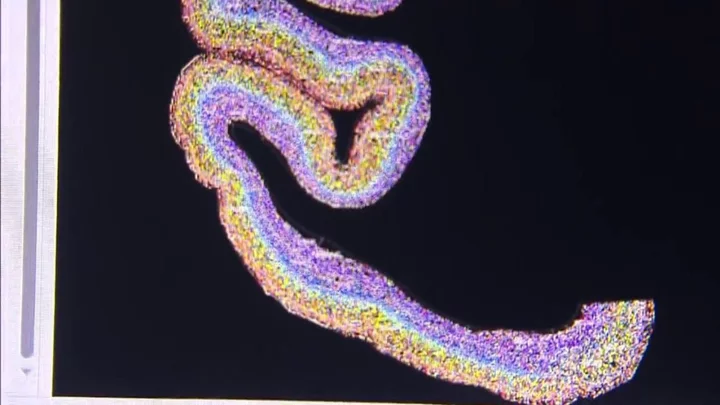
Scientists discover strange 'mathematical pattern' in the human body
The human body is a marvel of science and researchers have discovered a strange reoccurring mathematical pattern within its cells. Our bodies are made up of a massive variety of individual cells with countless different functions, from neurons in our nervous system to the oxygen carriers that all work in harmony to keep us alive. Experts from scientific research institutions in Germany, Canada, Spain, and the US have worked together on a study to determine just how many cells of each type there are in the human body and the results are staggering. They found that most adult males possess around 36 trillion cells, while adult females have in the region of 28 trillion cells. For a 10-year-old child, they have around 17 trillion. Interestingly though, scientists discovered that, regardless of the total number of cells, if they are grouped according to their function, the proportions for each individual remain the same. The researchers explained in their findings: “These patterns are suggestive of a whole-organism trade-off between cell size and count and imply the existence of cell-size homeostasis across cell types.” Scientists believe there is a natural balancing act at play between different cell types with new cells being produced to maintain the balance. The body produces fewer larger cells (such as muscle fibres) and more smaller cells (like blood cells). It is hoped that future studies will be able to uncover exactly how this happens and how bodies seem to naturally regulate cells. They explained that all cells are perfectly sized for their roles and any deviation from their scale can indicate the presence of disease. Experts have made their data, analysis and results public in the hopes that future studies into biology will be able to utilise their research. Sign up to our free Indy100 weekly newsletter Have your say in our news democracy. Click the upvote icon at the top of the page to help raise this article through the indy100 rankings.
2023-09-22 23:21
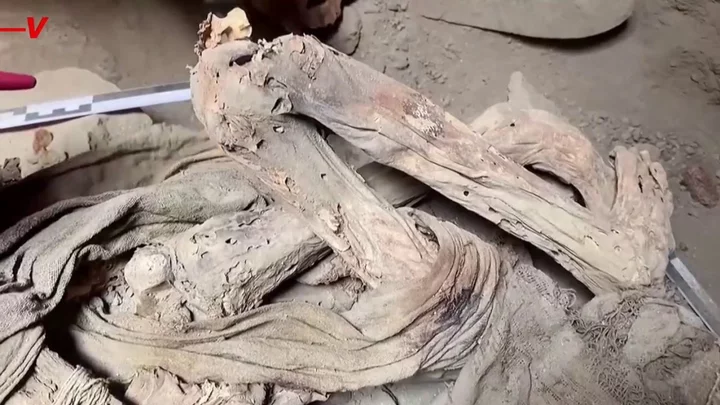
Scientists baffled by discovery of completely mummified man just 16 days after he was last seen alive
Warning: This article does contain images some readers might find disturbing. Investigators have been left puzzled after finding a man’s body in a stage of “complete mummification” just 16 days after he was last seen alive. The man was found alongside a railway line in Bulgaria on 3 September. Identity checks later found he was 34 when he died, with a history of alcoholism, and was last seen alive on 16 August. However, his insides had been reduced to “structureless masses”, and case workers have been unable to explain how the body reached such an advanced state of mummification so quickly. A report published in Cureus journal shows a full set of pictures of the corpse – linked at the foot of this article. Trigger warning, they’re pretty gruesome. It has got scientists fascinated though. The report’s authors reveal that the “skin surface showed coloration ranging from light to dark brown, and it was hard and leathery.” “The internal examination of the body showed that the internal organs in the cranial, thoracic, and abdominal cavities had decayed into dried, brownish-black masses,” they write. Researchers stressed that natural mummification “usually takes several weeks to 6-12 months”, and that such a fast transformation would only normally happen in extreme heat. The temperature in Sofia has ranged from 16 to 33 degrees Celsius in the time period, which scientists said is not hot enough. The authors speculated that passing trains could have created a windy environment that could have contributed to drying out the body and causing bodily fluids to evaporate. They said it almost certainly wasn’t the weather in Sofia that caused the bizarrely fast mummification process. As of yet, it remains a mystery. Here’s the journal article. Sign up to our free Indy100 weekly newsletter Have your say in our news democracy. Click the upvote icon at the top of the page to help raise this article through the indy100 rankings.
2023-09-22 17:17
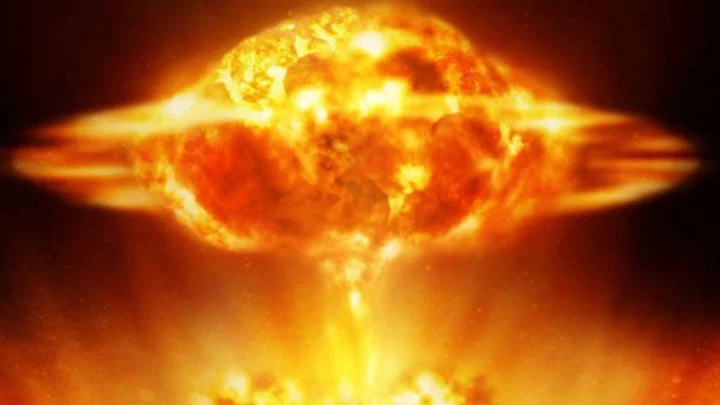
Missing nuclear bomb off the US coast could still explode
On February 5, 1958, two Air Force jets collided in mid-air during a train mission. Fortunately, all involved survived the crash, but one of the jets carried a Mark 15 thermonuclear bomb, as was "common practice" during training missions. The weapon is now believed to be hidden 13 to 55 feet below the ocean and sand, and the Air Force and Navy divers have been looking for it ever since. The nuclear weapon is somewhere off the coast of Tybee Island, Georgia, and every once in a while, a high reading of radioactivity is recorded in the area. This causes the US government to scramble in efforts to find the bomb, likely buried in the seafloor. For two months after the jets collided, the Air Force and Navy divers searched a 24-square mile area in the Wassaw Sound, a bay of the Atlantic Ocean near Savannah, using handheld sonar. On April 16 1958, the military decided the bomb was "irretrievably lost." The Air Force said the weapon wasn't fully assembled and "there was no danger of an explosion or radioactivity." Forty years later, a retired Air Force officer began to search for it. "It's this legacy of the Cold War," said Stephen Schwartz, author of 'Atomic Audit: The Costs and Consequences of US Nuclear Weapons Since 1940'. "This is kind of hanging out there as a reminder of how untidy things were and how dangerous things were." However, some experts say that the bomb may be better left buried, even if someone finds it. Whilst there was little chance of the bomb spontaneously exploding, there was a chance of it exploding during retrieval, and experts would have to remove and dispose of the uranium first. A 2001 report on the bomb suggested recovery cost would start at $5 million. "The whole Air Force perspective is, it's just not worth it," Schwartz said. "Trying to move it could create bigger problems than if we just leave it where it is." Schwartz said the only way the weapon will be found is by chance or if a powerful storm dredges it up. "I won't say it's lost for the ages because I don't think it is," he said, but "so many people have searched for it for so long using some fairly sophisticated equipment and not found it." Sign up to our free Indy100 weekly newsletter Have your say in our news democracy. Click the upvote icon at the top of the page to help raise this article through the indy100 rankings.
2023-09-22 00:24
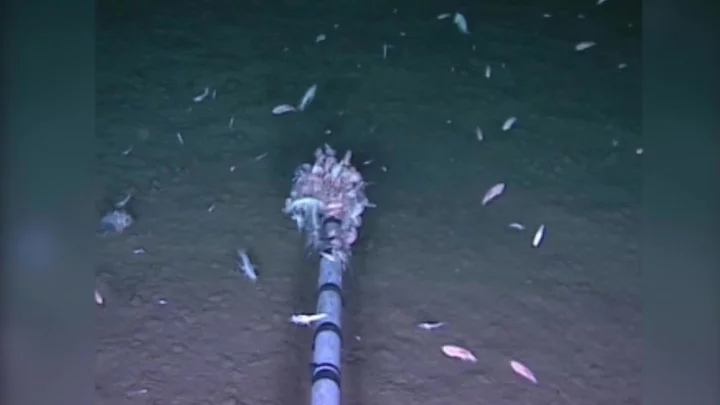
Scientists have found a novel virus at the bottom of the ocean
Scientists have discovered a new virus in the Pacific that is thought to be the deepest ever found in Earth’s oceans. The so-called bacteriophage virus infects and replicates inside bacteria, and was found in the Mariana Trench, which is the Pacific’s deepest point. Bacteriophages are among the world’s most abundant life forms, and are important for regulating population sizes in the oceans and releasing nutrients. This one, the catchily named vB_HmeY_H4907, was picked up at 8,900 metres below sea level. That is still some way off the 11,000 metre floor of the trench. Min Wang, a marine virologist from the Ocean University of China, said: “To our best knowledge, this is the deepest known isolated phage in the global ocean.” “Wherever there’s life, you can bet there are regulators at work. Viruses, in this case.” Scientists think this virus is likely to be distributed widely in the world’s oceans, despite the fact it has only been discovered. It has a similar structure to its host bacteria group halomonas. These are usually found in sediments and geyser-like openings on the seafloor. They also think the virus is lysogenic, which means it infects the host but does not kill it. Dr Wang said the discovery could inform further research about how viruses survive in the world’s harshest environments. “Extreme environments offer optimal prospects for unearthing novel viruses,” he added. The virus was found in the so-called hadal zone, which the study’s authors said is “the planet’s least explored and most mysterious environment, and it is the deepest habitat for life on Earth’s surface”. The area is named after Hades, the Greek god of the underworld. Researchers wrote in the study: “These findings expand our understanding of the phylogenetic diversity and genomic features of hadal lysogenic phages, provide essential information for further studies of phage-host interactions and evolution, and may reveal new insights into the lysogenic lifestyles of viruses inhabiting the hadal ocean.” The findings were published in the journal Microbiology Spectrum. Sign up to our free Indy100 weekly newsletter Have your say in our news democracy. Click the upvote icon at the top of the page to help raise this article through the indy100 rankings.
2023-09-21 20:48
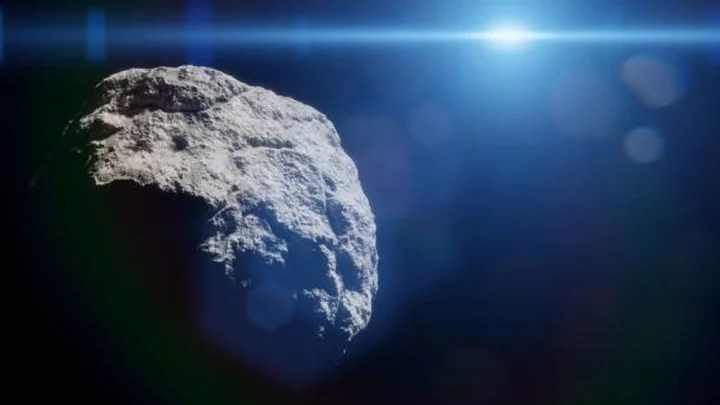
Scientists issue warning about asteroid heading to Earth with force of 24 atomic bombs
Scientists are on alert after NASA confirmed there is a chance an asteroid the size of the Empire State Building could come smashing into Earth. The asteroid is named Bennu after the ancient Egyptian bird god and has been on the space agency’s radar for a long time as they try to prevent it from coming crashing into our planet. Bennu has been categorised as one of the two “most hazardous known asteroids” and, despite the chance of impact standing at 1-in-2,700, it could strike the Earth with the force of 24 times that of the largest nuclear bomb – 1,200 megatons of energy. The carbon-based asteroid is approximately 510 metres wide and experts predict that it will come closest to hitting Earth on September 24, 2182. While the asteroid is quite sizeable, it is not quite as sizeable as the six-mile-wide asteroid which almost completely wiped out the dinosaurs. But, NASA warns that Bennu “could cause continental devastation if it became an Earth impactor”. A space mission launched using NASA’s OSIRIS-REx spacecraft has successfully taken a sample from Bennu in order for scientists to better understand the potentially dangerous asteroid. On Sunday (24 September) a capsule of the material will be dropped by OSIRIS-REx and returned to Earth where it will be retrieved and the matter inside studied. Davide Farnocchia of NASA's Jet Propulsion Laboratory told the Science Journal: “We improved our knowledge of Bennu's trajectory by a factor of 20.” As scientists work to investigate how much of a risk it could cause, Farnocchia added: “In 2135, we'll know for sure.” Sign up to our free Indy100 weekly newsletter Have your say in our news democracy. Click the upvote icon at the top of the page to help raise this article through the indy100 rankings.
2023-09-21 20:28

Former Elon Musk employee speaks out on 'ridiclous' death of Neuralink's monkeys
A new report from Wired has alleged that Elon Musk's Neuralink - a neurotechnology company developing a brain-computer interface - euthanised the company's macaque subjects after they suffered various complications from the implant. The report comes after human-test subjects were recently approved for Neuralink's clinical trial. Elon Musk had claimed earlier this month that "no monkey has died as a result of a Neuralink implant, but public documents obtained by the Physicians Committee for Responsible Medicine (PCRM) and seen by Wired, suggest that the primate subjects suffered complications including "bloody diarrhoea, partial paralysis, and cerebral edema." Musk had acknowledged the deaths on September 10 on Twitter/X, denying the deaths were "a result of a Neuralink implant", and that researchers had selected subjects who were already "close to death." However an anonymous former employee called this "ridiculous" if not a "straight fabrication." However, the public records reviewed by Wired suggest a different story. The PCRM, a nonprofit aiming to abolish live animal testing, claim that Musk knew his comments about the primate subjects deaths "to be false". They write that investors deserve to hear the truth about the safety, "and thus the marketability," of Neuralink's product. A December 2019 experiment outlined in one of the documents mentioned a subject known as Animal 15. The documents said that the subject "began to press her head against the floor for no apparent reason" just days after receiving the implant. Her condition only worsened as she "began to lose coordination" and "would shake uncontrollably when she saw lab workers." Staff finally euthanised her months later. Last year, the PCRM filed a complaint with the US Department of Agriculture (USDA) alleging that Neuralink's practices violate the Animal Welfare Act. The US Department of Transportation is also investigating Neuralink over allegations contimanted devices that were removed from monkeys' brains were illegally transported. Indy100 have reached out to Neuralink for comment. Sign up to our free Indy100 weekly newsletter Have your say in our news democracy. Click the upvote icon at the top of the page to help raise this article through the indy100 rankings.
2023-09-21 17:59
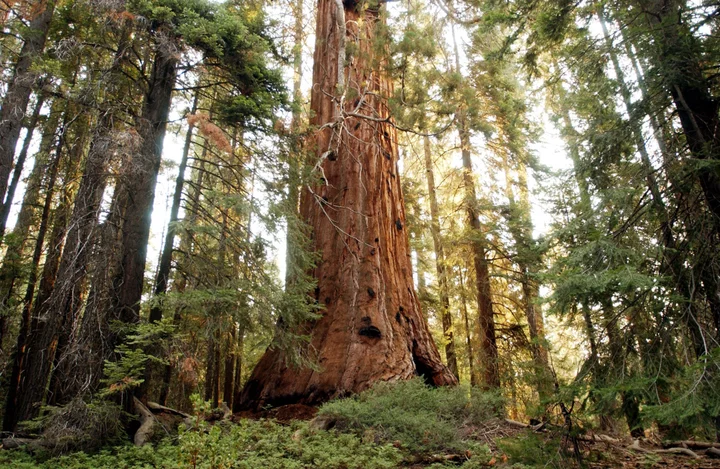
Carbon Offsets Undercut California’s Climate Progress, Researchers Find
Since the passage of its landmark climate regulations 17 years ago, California has been a leader in the
2023-09-21 17:55
